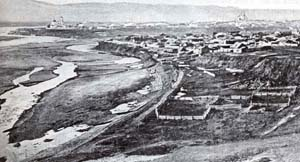 Krasnoyarsk is one of the oldest Siberian cities. A military detachment of Cossacks led by Andrei Dubensky founded it in 1628 as a military fortress. Originally the settlement was named “Krasniy Yar”, which means “Beautiful bank”. Krasnoyarsk received status of the city in 1690, when Siberia was finally added to Russia. In 1822 was announced the tsar's decree to create Yenisei province, and Krasnoyarsk became the center of it.
Krasnoyarsk is one of the oldest Siberian cities. A military detachment of Cossacks led by Andrei Dubensky founded it in 1628 as a military fortress. Originally the settlement was named “Krasniy Yar”, which means “Beautiful bank”. Krasnoyarsk received status of the city in 1690, when Siberia was finally added to Russia. In 1822 was announced the tsar's decree to create Yenisei province, and Krasnoyarsk became the center of it.
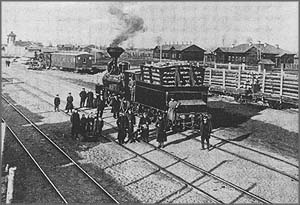 In XVIII century Krasnoyarsk turned from a military fortress into an average Siberian city. The turning point for the city history was the construction of the Great Siberian Railway in 1895. This railway connected Krasnoyarsk with the central part of Russia.
In XVIII century Krasnoyarsk turned from a military fortress into an average Siberian city. The turning point for the city history was the construction of the Great Siberian Railway in 1895. This railway connected Krasnoyarsk with the central part of Russia.
It was followed by the construction of the railway station and the famous bridge over the Yenisei. Thus, Krasnoyarsk became the major traffic center of Siberia. In XIX century the city became the place for Decembrists exile. At that time were founded educational and cultural institutions, own newspaper started to be issued. Thanks to this the city received the status of cultural capital of Siberia.
Today, after almost four centuries from its foundation, Krasnoyarsk is the major industrial, transport, scientific, cultural and sporting center of the East Siberia and the capital of the second largest region of Russia. There are 150 large- and medium enterprises functioning in the city. Krasnoyarsk has also been recognized as one of the most comfortable cities of Russia.
Krasnoyarsk history started in 1623, when Yenisei voivode Yakov Ignatievich Khripunov sent boyar’s son Andrei Anufrievich Dubensky to choose the place for a new fortress to secure Yeniseysk against Kirghiz raids. For the construction of the new fortress Dubensky chose a place that was four-days horse ride away from Yeniseysk, near the north line of the Kirghiz nomads' camp at the high plane promontory between river Kacha outfall and Yenisey, where its left bank – composed of red marl - rises up steeply and forms picturesque ridge. The place, chosen for the fortress, was named Krasny Yar ("red bank") by Dubensky, quite probably not because of the precipitous bank color but for the beauty of this place (as "krasny" in old Russian also meant "beautiful"). In 1627, when the building plan was approved in Tobolsk and Moscow, 303 men led by Andrei Dubensky had been equipped for campaign. With great difficulties the expedition reached the place and began to build the fortress in the middle of summer 1628. It is necessary to note that local residents were very peaceful and even helped in construction. According to historical documents "the prince of the near Tyulkina land - Tatysh met the Russians with peace and gave them horses". At the end of July 1628 Kirghiz tested the patience of the newly erected fortress and its defenders. The attack was successfully repulsed as well as the multiple further assaults on the Siberian stronghold. At times the fortress had been under a siege for months, but had never been seized by the enemies.
Cossacks were the first and the only inhabitants of the “New Kacha Ostrog”. That was the previous name of Krasnoyarsk. At the beginning of XVIII century the garrison consisted of 850 people, 80% of which were military men. As all Russian Cossacks in XVII —XVIII centuries, they were soldiers, officials and workmen simultaneously.
 In 1690 Krasnoyarsk received the status of the city. Krasnoyarsk lost the strategically importance of the military outpost after the Yenisei Kirghiz defeat, the departure of some of their princes to the Tien-Shan foothills, the construction of Abakan and Sayan fortresses and the signing of the Peace Treaty at Kyahta with Manchuria in 1728. Peace came to the city but it also brought a stop to its development.
In 1690 Krasnoyarsk received the status of the city. Krasnoyarsk lost the strategically importance of the military outpost after the Yenisei Kirghiz defeat, the departure of some of their princes to the Tien-Shan foothills, the construction of Abakan and Sayan fortresses and the signing of the Peace Treaty at Kyahta with Manchuria in 1728. Peace came to the city but it also brought a stop to its development.
In 1782 the Yenisei province, established at the times of Peter the First, was liquidated. This province covered almost the whole of current days Krasnoyarsk Region. The territory of the Krasnoyarsk Uezd was divided between three regions ruled by governor-general: Tobolskoe, Kolyvanskoe and Irkutskoe. Krasnoyarsk was subordinated to Tobolsk, but still preserved its previous administrative significance. Since 1804 Krasnoyarsk was subordinated to Tomsk, which became the principal city of the province.
The transformation of Krasnoyarsk from the big frontier stronghold to a usual small Siberian town had an impact on all spheres of its life. At the last quarter of the century the city appearance had no reminder about its warring past. In 1773 an awful fire destroyed all fortifications and left only 30 houses untouched.
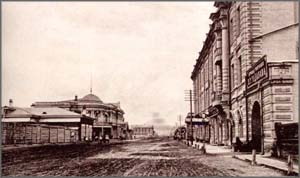 The city life changed, when in 1822 tsar's decree to establish Yenisei Province was issued. Krasnoyarsk was chosen to be its center, it was not a big city, but it had the most advantageous economic-geographic position. At this time there were functioning telegraphic station, primary school, men’s and women’s gymnasiums, teacher’s seminary and handicraft specialized school. Merchants, craftsmen and owners of goldmines went to Krasnoyarsk, first stone buildings were constructed, a park was laid out, a printing establishment was opened and the first Krasnoyarsk newspaper “Yenisei province record” was published.
The city life changed, when in 1822 tsar's decree to establish Yenisei Province was issued. Krasnoyarsk was chosen to be its center, it was not a big city, but it had the most advantageous economic-geographic position. At this time there were functioning telegraphic station, primary school, men’s and women’s gymnasiums, teacher’s seminary and handicraft specialized school. Merchants, craftsmen and owners of goldmines went to Krasnoyarsk, first stone buildings were constructed, a park was laid out, a printing establishment was opened and the first Krasnoyarsk newspaper “Yenisei province record” was published.
Another important date for Krasnoyarsk is December 6, 1895. It was time when the first train opened the traffic on the Trans-Siberian Railway. The construction of this railway significantly facilitated the development of the city.
In 1934 Krasnoyarsk became an administrative center of the region with rapid development of industry. At the beginning of 1941 there were 38824 people working at the city enterprises. The industrial power of Krasnoyarsk was increasing during the war period and it became the major industrial center of East Siberia, outrunning Irkutsk.
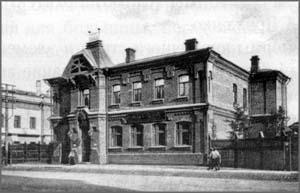 A new page of city history was the development of the hydropower resources of Angara and Yenisei, which began during the post-war period. At the time of industrial rise both electrical power industry and related enterprises like ferrous and nonferrous metallurgy, pulp-and-paper industry, medical and chemical industries were created here. Krasnoyarsk became the major center of academic science, higher and specialized secondary education. Today there are 47 research organizations, 12 state institutions of higher education and 35 technical colleges in the city. Krasnoyarsk is the cultural center of the region. There are Theatre of Opera and Ballet, Dramatic theatre, Theatre of Musical Comedy, Theatre for Young Audience, Puppet Theatre, Picture Gallery, Local History Museum, Surikov Museum, Symphony Orchestra, Organ Hall in the city. And it is necessary to note famous Mikhail Godenko’ Siberian folk dance group.
A new page of city history was the development of the hydropower resources of Angara and Yenisei, which began during the post-war period. At the time of industrial rise both electrical power industry and related enterprises like ferrous and nonferrous metallurgy, pulp-and-paper industry, medical and chemical industries were created here. Krasnoyarsk became the major center of academic science, higher and specialized secondary education. Today there are 47 research organizations, 12 state institutions of higher education and 35 technical colleges in the city. Krasnoyarsk is the cultural center of the region. There are Theatre of Opera and Ballet, Dramatic theatre, Theatre of Musical Comedy, Theatre for Young Audience, Puppet Theatre, Picture Gallery, Local History Museum, Surikov Museum, Symphony Orchestra, Organ Hall in the city. And it is necessary to note famous Mikhail Godenko’ Siberian folk dance group.
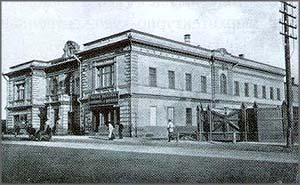 Today Krasnoyarsk is the city with population of more than a million people, the geographical center of the country and the biggest main traffic center of Siberia. There are tens thousand enterprises, organizations and institutions in the city. The fourteenth city by the number of inhabitants, Krasnoyarsk is the administrative center of one of the biggest federal regions in Russia – the Krasnoyarsk Region, which area is about 2339,7 thousand square kilometers or 13.6% of all country’s territory.
Today Krasnoyarsk is the city with population of more than a million people, the geographical center of the country and the biggest main traffic center of Siberia. There are tens thousand enterprises, organizations and institutions in the city. The fourteenth city by the number of inhabitants, Krasnoyarsk is the administrative center of one of the biggest federal regions in Russia – the Krasnoyarsk Region, which area is about 2339,7 thousand square kilometers or 13.6% of all country’s territory.
